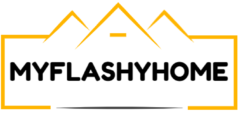
Every owner of a horse property knows that it is so much more than owning land. Horse property should be a safe and functional space with a focus on horses’ well-being, and in addition to all of that, it should be about aesthetics. It doesn’t matter if you are the owner of a small hobby farm or a large equestrian facility, because, for each of them, it is crucial to have the right features first of all adjusted for horses and then to make daily management easier.
If you want to buy a horse property or are thinking about redesigning and upgrading an existing one, here are the 10 most important elements you should integrate into your property.
- Proper Fencing for Safety and Security
This is a very important feature because it can impact the safety of your horses. Using varied materials for fencing, and each material has its advantages. However, people would often prefer a traditional wooden and electric fence because it offers durability and security alongside the vinyl option for fencing.
Here’s some advice on what you should consider when choosing fencing for your horse property, and maintaining it later:
- Choose horse-safe materials – The majority of materials are safe, but you should definitely avoid barbed wire because it can cause serious injuries.
- Regular maintenance is key – You must check frequently possible damage on boards and loose wires.
- Plan for proper height – low fences can’t keep horses from escaping, so you need to get fences that are at least 4.5 to 5 feet tall.
- Barn and Shelter Space
These make strong barns or shelters as horses’ protection against extreme weather. There are factors you need to consider when building one like ventilation, roofing materials, and the position of stalls to allow for natural airflow.
- Functional and Durable Horse Stalls
Having properly built horse stalls is crucial for both safety and comfort. If you are not so familiar with the importance of factors to consider when getting horse stalls here are key aspects you should consider including:
- Size matters – Standard stall dimensions are usually at least 12×12 feet.
- Ventilation and lighting – Proper airflow is important for horses’ long-term health because it reduces respiratory issues. Good lighting is essential for visibility and safety.
- Flooring options – The flooring material should be comfy for the horses and it should be easy to clean and maintain. With those two aspects in mind, rubber mats are the best option. Especially when compared to compacted earth or concrete.
A useful tip is to get higher-quality mats because they’ll have less wear over time. Horses are heavy, so you have to think long-term to avoid spending much, too often.
- Functional Waste Removal and Drainage
Waste and drainage maintenance is very important in avoiding the formation of mud and providing a clean and healthy environment. Some tips are gravel or sand footing in areas of increased traffic, as well as setting up an easy-to-use manure management system.
- An Accessible, Clean Water Supply
Horses, much like humans, must have access to fresh water, continuously. Automating waterers and ensuring clean access points are a prime step in the hydration and health status of the equine.
- Grazing Areas with Adequate Space for Pasturing
Well-managed pasture translates to reducing costs on feeds and improving the welfare of horses. In most cases, a horse requires between 1.5 and 2 acres of pasture for grazing purposes.
If you need help with visualizing these important dimensions, here are key features and their recommended standards:
| Feature | Recommended Standard | Benefit |
| Stall Size | 12×12 feet | Comfort for movement |
| Fence Height | 4.5 – 5 feet | Prevents horses from jumping over |
| Pasture Space | 1.5 – 2 acres per horse | Adequate grazing |
| Water Supply | Automatic waterers | Constant hydration |
| Shelter Size | 12×24 feet per 2 horses | Weather protection |
- Proper Storage for Feed and Equipment
Organization is key in proper storage and it is important for preventing spoilages and efficiency. If you want to maintain feed quality and have easy access you should consider this:
- Weatherproof storage solutions – Moisture and extreme temperatures can damage feed, so you need to consider some weatherproof storage solutions to prevent this from happening.
- Rodent-proof bins – Pests can contaminate and reduce feeds’ nutritional value, and this is a good option for prevention.
- Stackable hay storage – It minimizes the risk of mold by maximizing air circulation. It’s also important for space saving.
- Dedicated tool areas – It’s advisable to store necessary tools in one place because of the efficiency of daily operations plus you’re avoiding safety hazards.
Conclusion
If your goal is to establish or upgrade a properly designed equestrian property, then it should be toward enhanced barn functionality and safety for the horses. While other aspects are impotant, safety and functionality come first.
For one thing, you can have a secure fencing system, durable horse stalls, proper storage for feed and equipment, and all other essential features that’ll directly work toward not only giving a comfortable space for your horses but also making it an efficient one.
This investment will give you a healthier, more manageable space for your horse friends.
Happy barn, happy horses!
